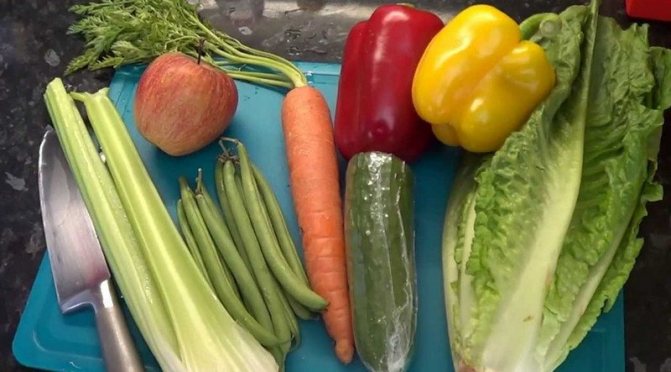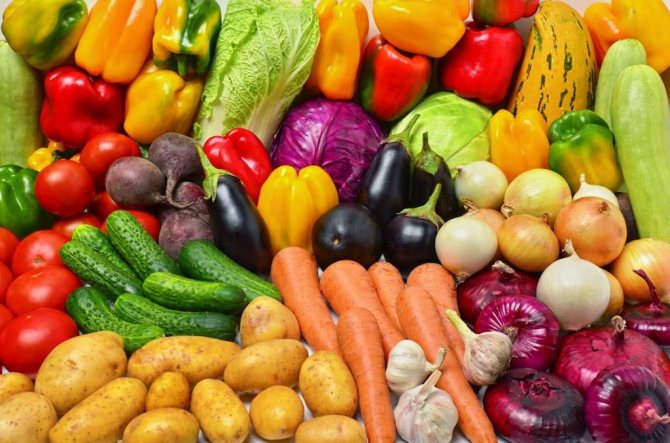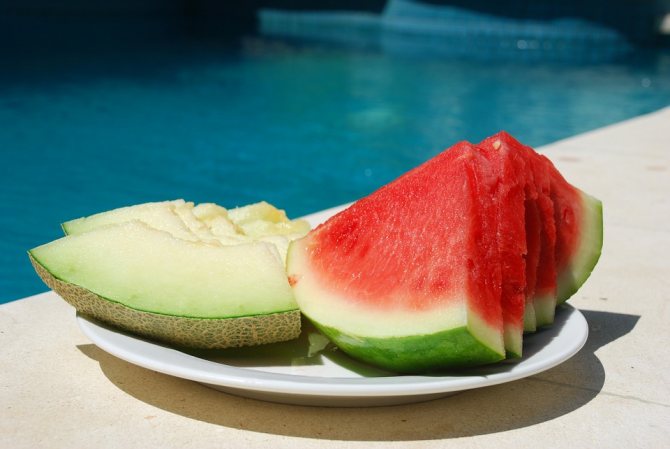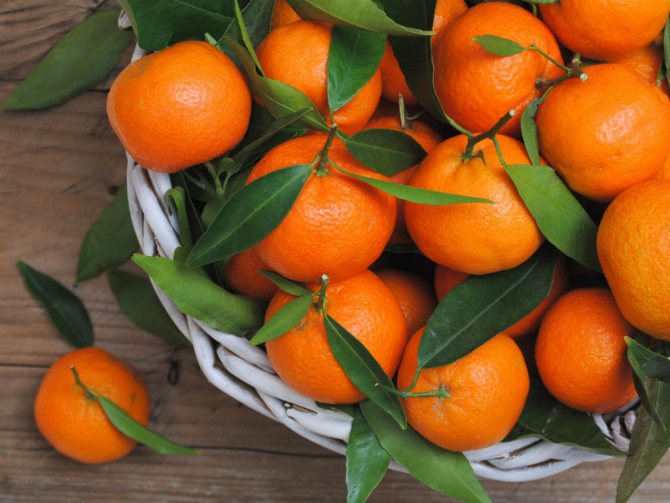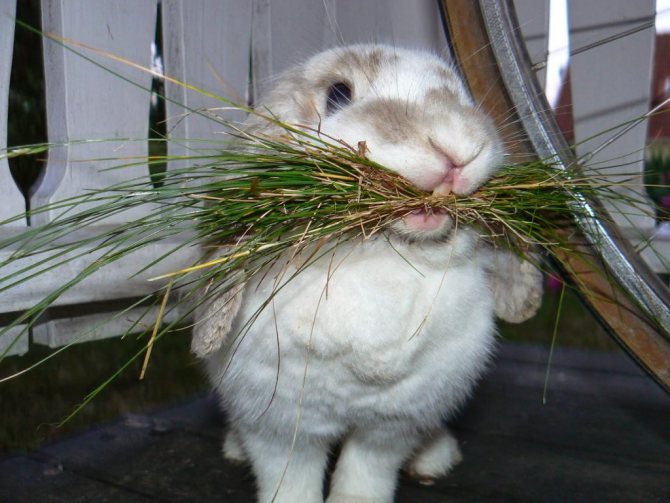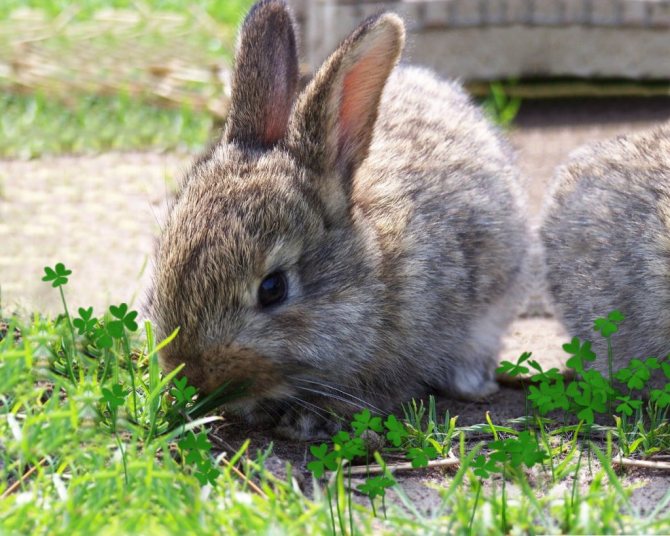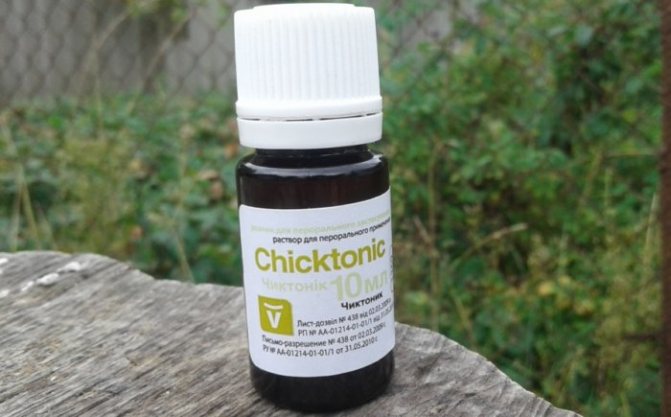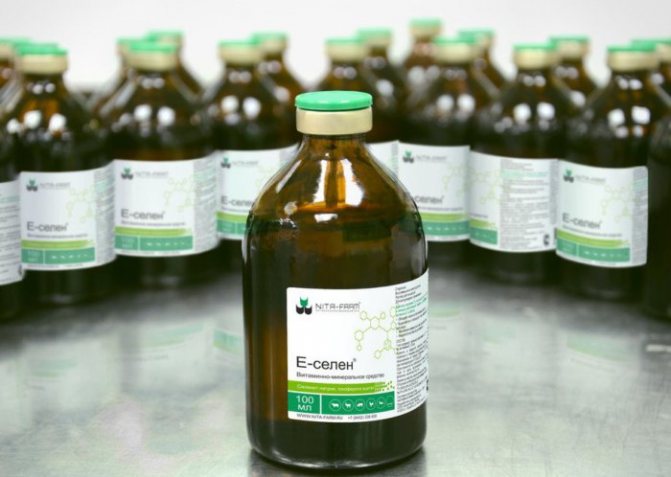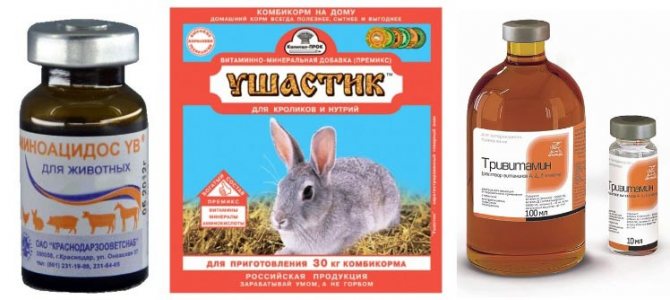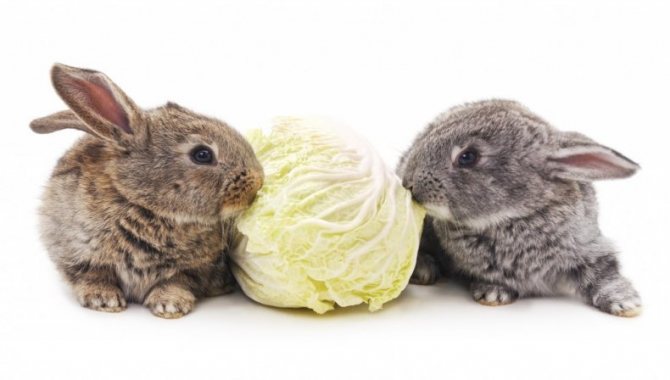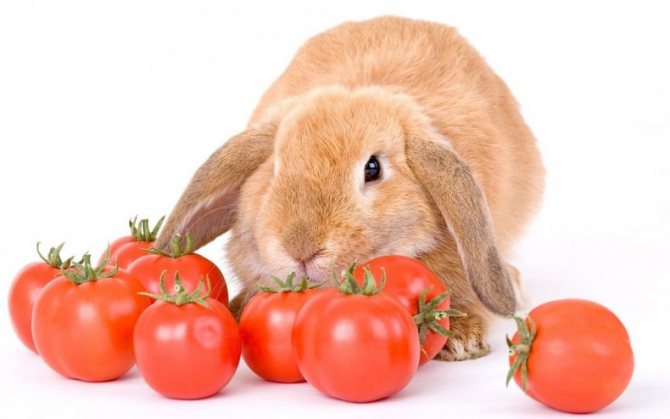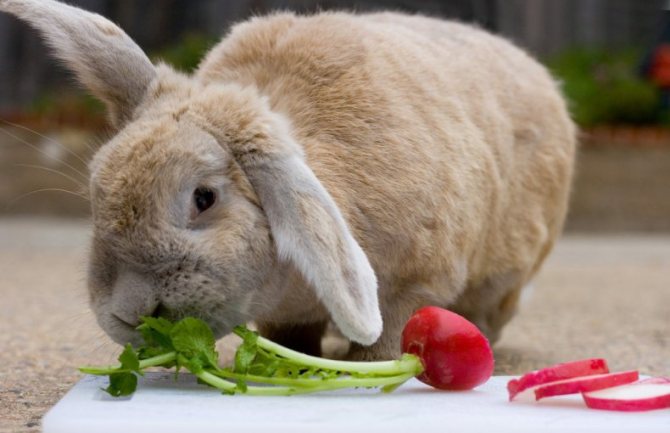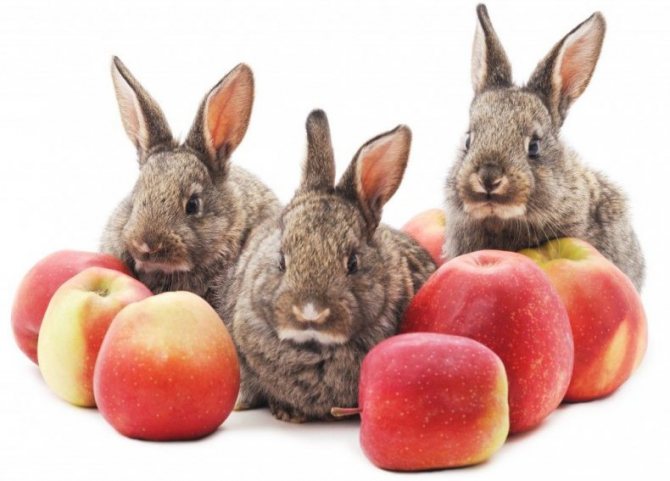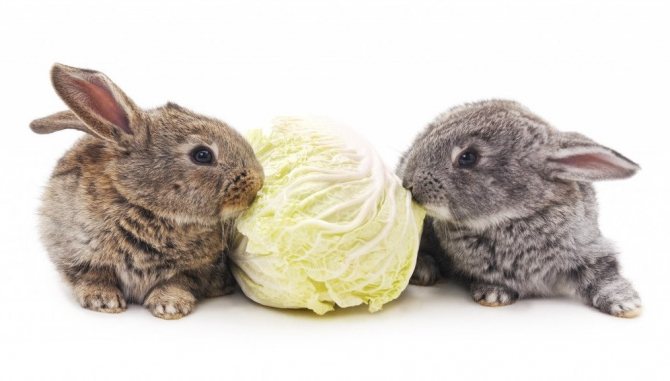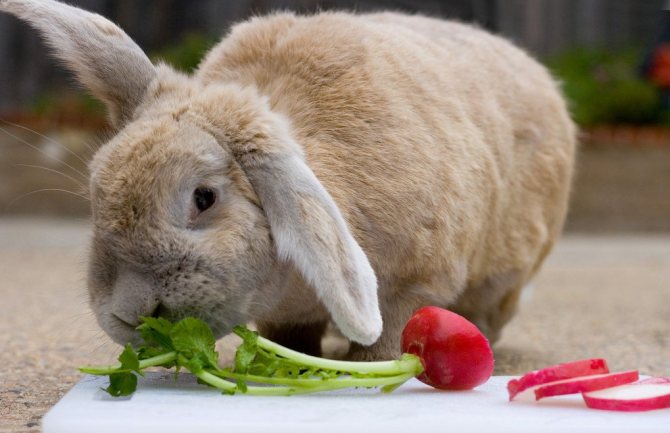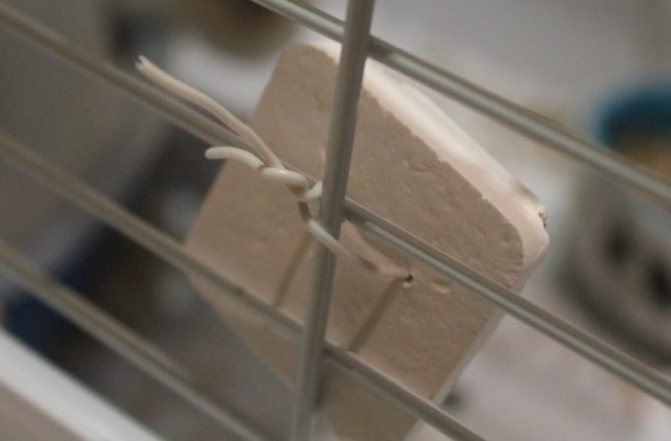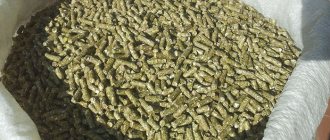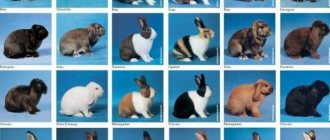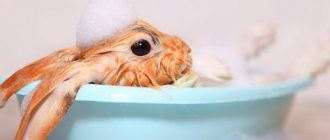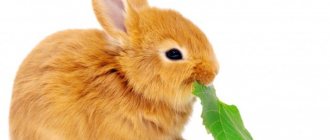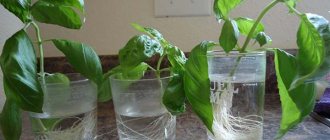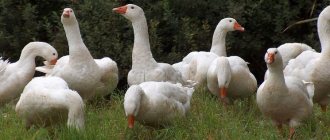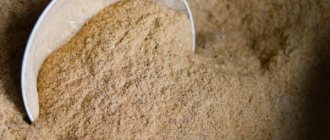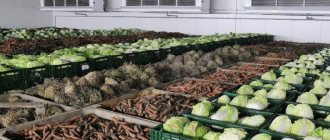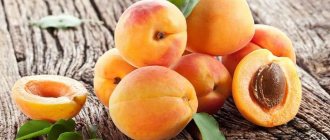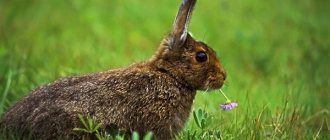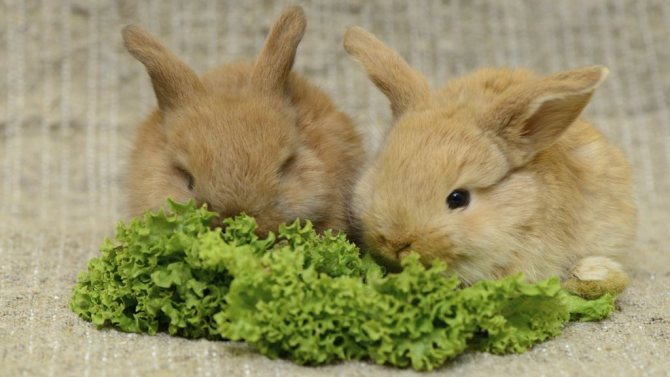
Photo from the site otoplus-
A bunny rabbit is a small pet that needs good grooming, care and affection. Most often they are bought in response to long persuasions of children. However, if you have purchased an eared eeyore, take a responsible approach to the issue of its content and diet. The state of his health, appearance and mood will depend on this.
In this article, we will talk in detail about what you can feed a decorative rabbit at home at different times of the year, how to properly prepare hay, what vegetables and fruits to buy for your pet in winter.
What vitamins do rabbits need
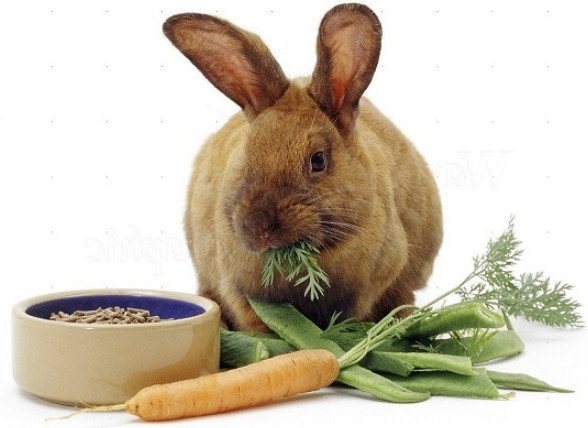

In the warm period, the rabbit's diet consists of green fodders, which fully provide the animal with vitamins and minerals necessary for life. In winter, you have to look for an alternative to green food.
The rabbit's diet should contain the following vitamins:
- retinol (A) - participates in the formation of thyroid enzymes, in reproductive processes, contributes to the formation of muscle mass;
- thiamine (B1) - participates in the processes of biosynthesis of substances in the stomach, strengthens the vascular walls;
- riboflavin (B2) - is responsible for the synthesis and assimilation of amino acids, the formation of a full-fledged hairline and the restoration of skin cells;
- pantothenic acid (B5) - participates in the process of oxidation and breakdown of fatty acids; especially important in the active phase of embryo growth;
- pyridoxine (B6) - is responsible for the construction of nerve cells, the transport of nutrients to the brain;
- cobalamin (B12) - actively participates in the processes of hematopoiesis, the breakdown of fats, the formation of the membranes of nerve cells;
- ascorbic acid (C) - forms cells of the immune system, promotes the production of antibodies to foreign microorganisms;
- calciferol (D) - participates in the breakdown of minerals and the formation of bone tissue;
- vitamin E - is necessary for the normal development of muscle tissue, mucous membranes of the reproductive organs;
- vitamin K - participates in the processes of blood coagulation.
The complex of vitamins for rabbits is selected depending on:
- direction of the breed;
- age.
Important! Vitamin deficiency negatively affects the health and development of the animal's body. For all breeds, the symptoms of vitamin deficiency are similar.
With a lack of vitamin C, a decrease in immunity is observed. Animals often suffer from colds. Their fur becomes dull, takes on an unsightly appearance, knocking over large mats.
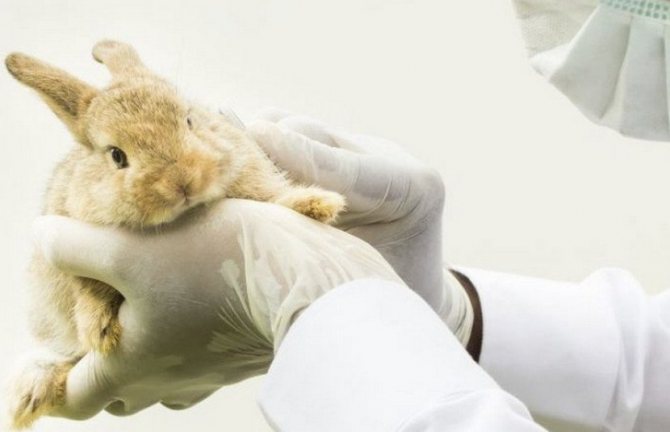

With a lack of vitamins A and E, there are problems with the skin in the form of dermatitis, the appearance of bald spots that resemble lichen. Rabbits have watery eyes from drying out. Animals are lethargic, refuse to mate, spend more time in the far corner of the cage. Growth retardation is observed in young animals.
Lack of thiamine is manifested by impaired functionality of the intestinal tract, high susceptibility to infection, increased nervous excitability. Deficiency of vitamin D leads to the development of rickets, decalcification of bones.
Meat breeds
For breeds of meat production, vitamin E is especially important. With its lack in animals, underdevelopment of young animals is observed, females lose the ability to bear babies.
Find out how to fatten your rabbit for meat in a short time.
In representatives of meat breeds, the body is genetically predisposed to rapid growth and muscle mass gain. Accordingly, more energy is consumed, the main part of which is synthesized from proteins (B vitamins). With a protein deficiency, the body synthesizes energy from fat reserves and tissues of the dermis, organs, bones, which leads to depletion.
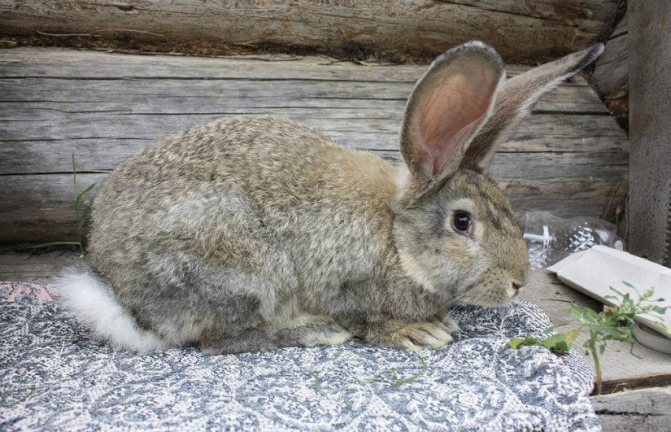

The diet of meat breeds of rabbits should predominantly contain:
- calcium;
- vitamins of group B and E.
For decorative rabbits
Decorative breeds are often kept in an apartment, where even in the summer, animals suffer from a lack of greenery. Their diet needs to be balanced with the optimal amount of all vitamins. In winter, decorative rabbits are in dire need of antioxidants. To provide them with a sufficient amount of ascorbic acid, add 2-3 drops of lemon juice or rosehip decoction to the water.
Did you know? The growth rate of teeth in a rabbit is 10 cm per year. Their growth continues throughout life, so animals are forced to constantly grind them.
Rabbits
The young body of rabbits needs minerals. Even with the purchase of full-fledged balanced compound feed, once a week, the rabbits are given calcium-containing preparations (for example, dolomite flour or a calcium gluconate tablet).
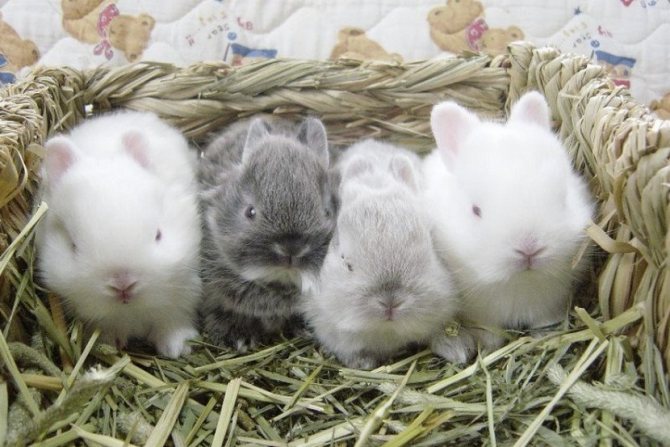

For furry bunnies
The organism of the female fledged female consumes energy and nutrients in large quantities. To maintain immunity, she will need:
- omega 3 fatty acids;
- phosphorus;
- calcium;
- protein;
- ascorbic acid.
Feeding rates
The ornamental rabbit's feeder should not be empty, since the consumed food moves through the intestines at the expense of the incoming one. A break in feeding leads to fermentation and decay of feces, which can lead to the death of the animal.
There is no specific rabbit diet. The main thing is to ensure the constant presence of hay, bark, twigs of shrubs and trees in the aviary or cage. Other feeds included in the diet of the decorative rabbit are supplied twice a day.
Important! There must be a drinking bowl with clean water in the cage.
Where vitamins are found
Carotene, ascorbic acid and vitamin E contain:
- herbs;
- fish fat;
- vegetables fruits.
It is helpful to know what kind of grass you can give your rabbits and what you can't.
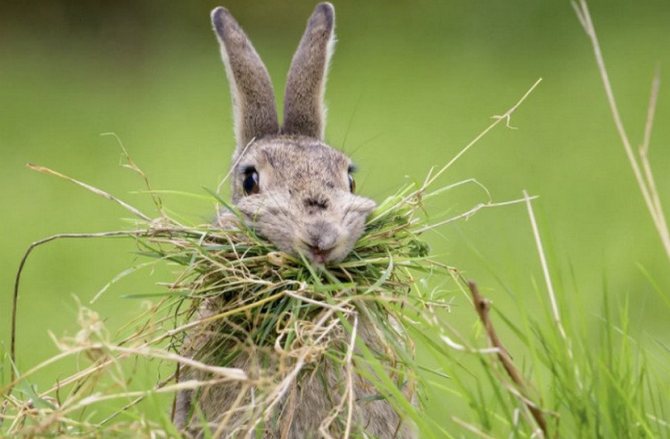

Protein is found in:
- dry branches;
- tops of legumes;
- cereals and cereals;
- meat and bone meal;
- yeast.
Prohibited foods
Pets should not be fed onions. Garlic is also taboo. Also, the use of the red-headed variety is unacceptable.
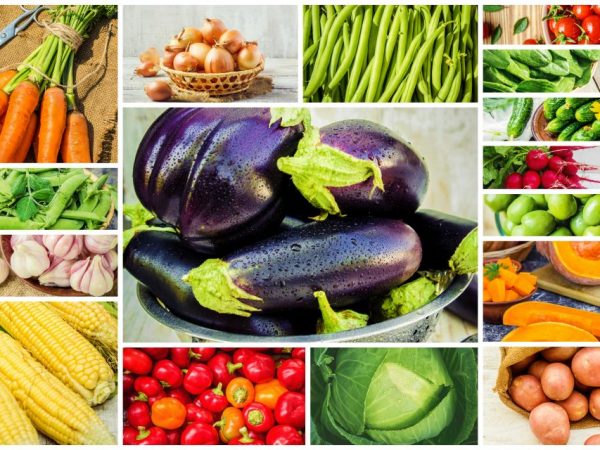

Some vegetables should be given to eared rodents in limited quantities, because their excessive consumption can lead to intestinal dysbiosis
Fodder beets, eggplants, beans, rhubarb are prohibited.
Some people say that cabbage does more harm than good. However, it is not included in the list of prohibited foods. If you really want to treat your pet with this vegetable, it is better to take the outer leaves, and wait until they are slightly attached.
Apricots and plums are prohibited from fruit crops.
Do not include in the diet tops and peels of tomatoes, potatoes and rhubarb. Any bones or seeds, including fruit seeds that are not prohibited for consumption, should not fall into the pet's plate.
You cannot feed rye, millet and rice. They contribute to the production of mucus in the stomach. You cannot feed the rye because it is too hard.
Read also: Rabbits of the Marder breed (Soviet and large) - varieties of the breed and its feeding and breeding features
Frozen foods are strictly prohibited.
Injections
Preparations in injections allow to quickly replenish the lack of vitamins. Intramuscularly vitamins are indicated in the treatment of certain diseases and serious manifestations of vitamin deficiency. Usually, drugs enriched with B vitamins are injected. For prophylactic purposes, vitamin complexes are used in the form of additives to water and food.
It is better to use complexes that include all the useful elements. This will eliminate the risk of overdose in case of independent calculations.
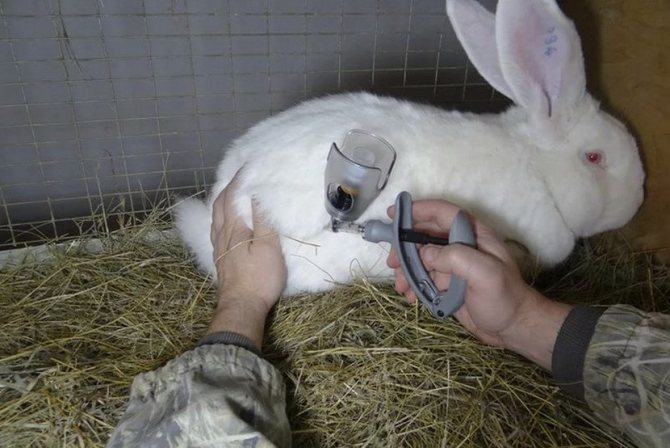

They have proven themselves well:
- Chiktonik.
- Threaded.
- E-Selenium.
Important! With long-term antibiotic treatment, vitamin K deficiency occurs in rabbits. It is administered in parallel with the start of antibacterial treatment along with probiotics.
Chictonik
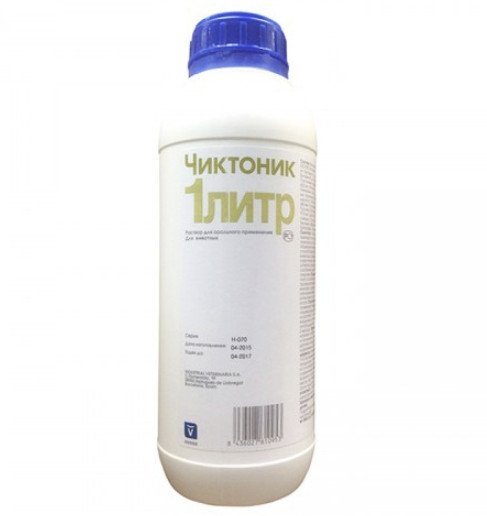

The drug is a complex of useful elements that dissolve in fats and water, aromatic, flavoring additives and growth vitamins. It is used to eliminate the risk of developing vitamin deficiency.
Helps to strengthen the body when bearing cubs. Its use allows you to increase the weight gain in meat breeds of animals. The preventive course is 5 days. 1 cube of the drug is diluted with 1 liter of water and given as a drink. The course is repeated during the cold period once a month. The drug has no side effects (but only when used in a given dosage). A contraindication is individual intolerance in animals of one of the components of the complex.
Progress
The drug consists of 3 components:
- retinol;
- tocopherol;
- cholecalciferol.
It is used to maintain and stabilize biochemical processes in the body of animals. Increases the protective functions of the body and the adaptive abilities of animals.
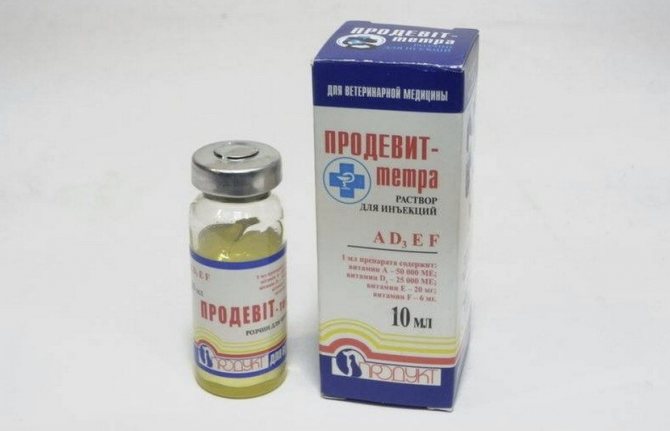

The drug is administered intramuscularly or orally. The injection dosage is 0.4 ml every 14-21 days. The oral dosage is 2 drops. The drug is added to food for 2-3 months. daily.
E-Selenium
The main active components of the drug are as follows:
- retinol;
- vitamin E;
- selenium;
- vitamin D3.
Appointed for:
- the presence of problems with bearing in females;
- helminthic invasions;
- decreased immunity;
- traumatic myositis;
- prevention of selenium deficiency;
- stress;
- mycotoxin poisoning.
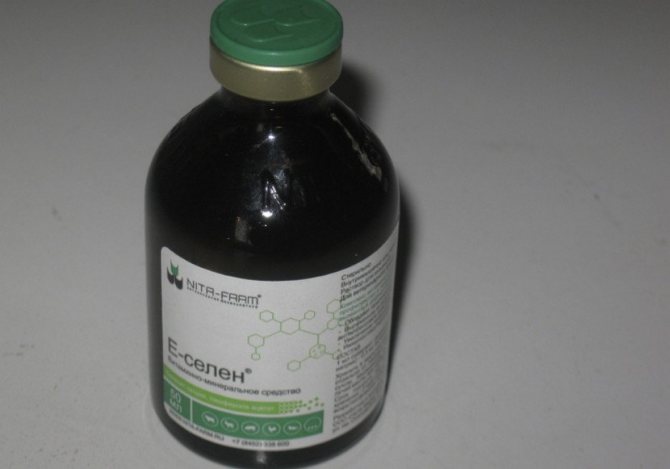

The drug is injected subcutaneously with 0.04 ml / kg of body weight. Injections are done every 7-14 days during treatment, every 2-4 months. with a preventive purpose.
Important! The complex is contraindicated in animals with an excess of selenium in the body. In case of an overdose, there are obvious symptoms of intoxication. They are stopped with methionine or sodium sulfate.
What to give from fruits and berries
Introducing fruits into the diet is just as important as introducing vegetables.
What can
Experts recommend giving the following fruits to rabbits:
- apples;
- bananas;
- melon;
- kiwi;
- pears;
- watermelons;
- Strawberry.
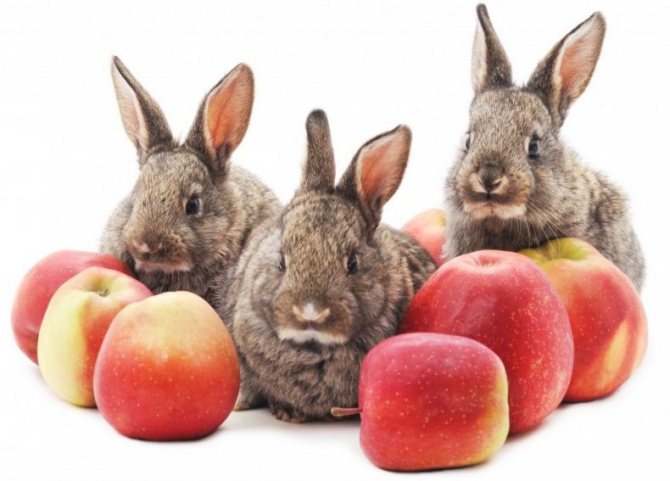

Pits should be removed from apples
Which are not allowed
There are fruits and berries that are not recommended for pets. These include:
- stale, which have already begun to deteriorate;
- stone fruit varieties;
- apple pits (before giving an apple, it should be peeled from internal pits);
- melon unpeeled from internal elements;
- unpeeled fruits and berries.
It is not recommended to give citrus fruits to rabbits, with the exception of seasonal tangerines. They can be given in 1 wedge portion every 3 days.
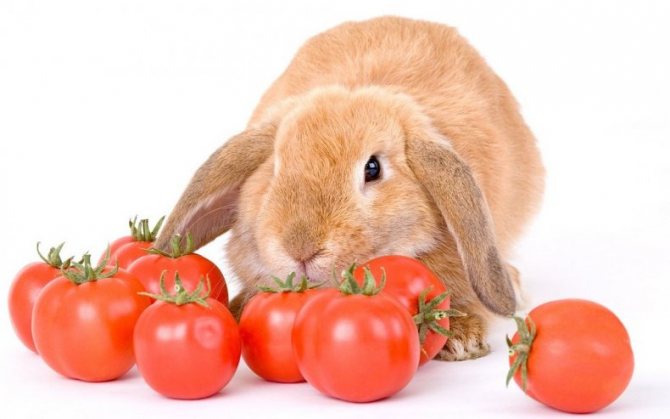

Vitamin Supplements
When fed with dry compound feed, animals suffer from a lack of minerals. It is difficult to calculate the dosage for each individual mineral on your own, so it is better to use ready-made supplements presented in a wide range by livestock stores. Most often used:
- Mineral stones.
- Bio-iron with microelements.
- Eeyore.
See below for more details on each supplement and dosage.
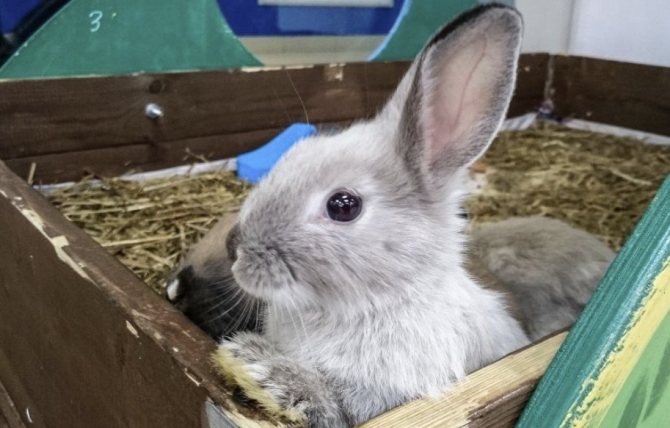

Mineral stones
Mineral stones are blocks containing at least 9 useful minerals with the addition of carrots and greens.The blocks are attached to the cage grate next to the drinker. If the animal has not touched the feeding, then its body does not need minerals at this stage of development. When he needs food, the animal will lick the stone and grind its teeth on it. Such blocks are hung in cages and on walking areas, regardless of the season, so that rabbits can independently regulate the lack of minerals in the body.
Bio-iron with microelements
The basis of the substance is iron, iodine, cobalt. The additive helps to improve the condition of the skin and fur. Used to prevent anemia. The drug is indicated for use in females and young animals that have grown during the period of active growth. On the day of each individual, 0.1 ml of the substance is added to food or water. The course is 2-3 months.
Eeyore
The top dressing contains a complex of vitamins and minerals necessary to accelerate growth and form a beautiful shiny fur. Before use, the dressing is mixed in a 1: 1 ratio with flour.
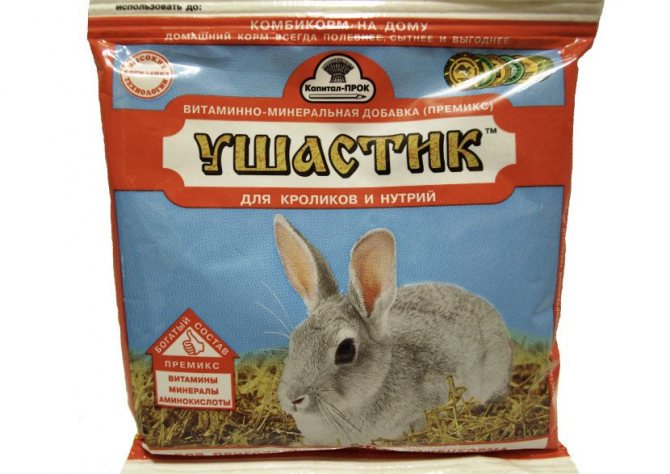

The dosage depends on the age of the rabbit. For an adult, there are 1.5-5 g of the mixture, which is added to the feed. Babies need to add 0.5-1 g of the mixture to the feed.
Did you know? After fertilization, more embryos are formed in the rabbit's uterus than the young are born. Some of the embryos are absorbed during gestation due to stress.
The key to successful breeding of rabbits is the organization of a balanced diet. The main food of animals in the summer is greens. With the onset of cold weather, it is necessary to take care of the prevention of vitamin deficiency. Vitamin-mineral complexes, adapted to different age categories of rabbits and the orientation of the breeds, will help in this. When introducing top dressing, the main thing is not to overdo it with the dosage, since an excess of vitamins negatively affects the health of the pets.
Precautions
Before introducing new products, you should familiarize yourself with the basic precautions to avoid unpleasant consequences:
- it is strictly forbidden to introduce eared vegetables and fruits into the diet if the individuals have not reached 4 months of age;
- it is important to mix products with each other so that pets do not get used to the monotonous menu;
- in order to save the strength of the animals, all the components of the menu must be cut into small pieces, then the rabbits will have to spend less energy on chewing;
- all products must be thoroughly washed, wiped dry with paper napkins or towels and only then given to pets.
What vegetables and fruits to feed rabbits: video
The benefits of feeding
In order not to experience health problems and to develop normally, to feel good, rabbits need to get drink, hay and food. However, fruits and vegetables allow you to diversify the diet and give your pet an additional source of nutrients and vitamins. They have a beneficial effect on the work of internal organs, normalize stool, affect the strengthening of muscles, make the animal stronger, more resistant to infections.
Berries are very useful for animals, they have a beneficial effect on immunity, increase appetite, and remove toxins.
How to feed properly?
It is necessary to follow the rules when introducing this type of feeding, products need prepare correctly:
- rinse thoroughly;
- wipe very well;
- if necessary, get rid of the peel, bones;
- cut into small pieces;
- some foods need to be dried.
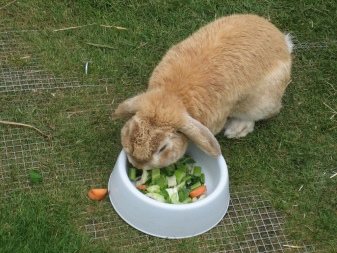

The product must be dry and not cold before use. If it is stored in the refrigerator, take care ahead of time, take out the fruit or vegetable and let it warm up. Such feeding is introduced upon reaching the age of two months, or later. Complementary foods are added to the diet gradually, limiting the use to any one species. After you check the reaction to each product separately, you can start combining them.
Vegetables
Despite the fact that there is a list of vegetables recommended for consumption, when introducing complementary foods, it is imperative to monitor the reaction and condition of the pet. Vegetables include a variety of vegetables, boiled potatoes without a peel are perfectly digestible. But it should be remembered that it is quite high in calories, so follow to alternate it with cabbage, carrots. Top dressing should be varied. Sugar beet is a favorite delicacy of rabbits, you need to include only ripe fruits in the diet, without the peel.
It is important not to overdo it and not to give too much beets, monitor the reaction, as it can cause loose stools in large quantities.
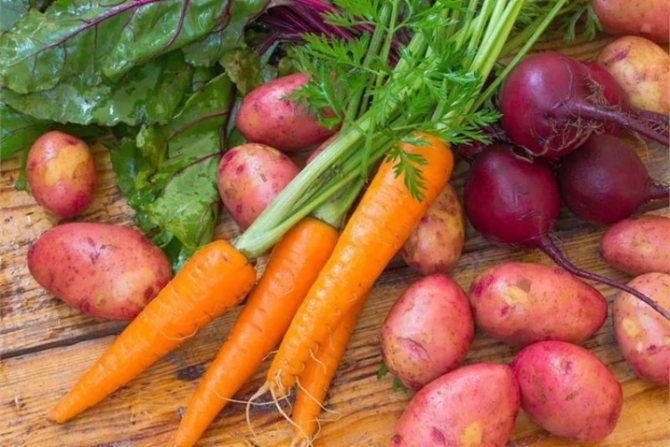

Cucumbers are another useful product, you can even start giving it to babies. These vegetables are good for feeding and mother-rabbits, as they increase the amount of milk. Due to the fact that there are a minimum of calories in cucumbers, they can be given almost all year round, and in summer, in hot weather, this vegetable is especially relevant, because it contains a lot of water. The same can be said for tomatoes. Of course, there is an advantage over products grown in our own garden or purchased from trusted farmers, in mass production there is a large percentage of processing vegetables with chemical compositions, nitrates for storage duration. They can harm the rabbit and its health, so it is necessary to reduce their consumption to a minimum.
Be sure to feed the animal with stalks of chard, celery, broccoli. Corn is good both fresh and processed. Rabbits are very fond of Jerusalem artichoke, moreover, they are ready to give up other vegetable delicacies for it. Be careful, if this happens, you will have to exclude Jerusalem artichoke from the diet, since a variety of feeding is very important for the harmonious development of the animal.
Be sure to include pumpkin in your diet.

